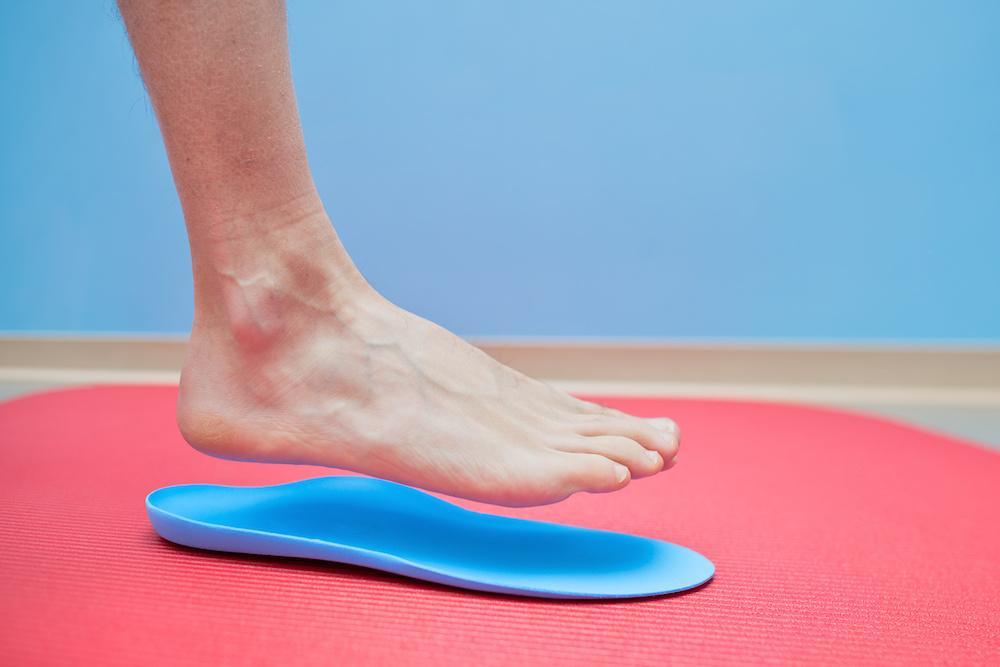If ill-fitting shoes contribute to your foot pain, you might benefit from some shoe inserts. A podiatrist can provide you with customized orthotics that is molded to your feet.
There’s been a shift in podiatrist shoe recommendations from bulky, orthopedic shoes to stylish sneakers, heels, and business footwear. Today’s podiatrists connect fashion and function with modern technology.
Customized Orthotics
A podiatric exam can help a patient find the right pair of orthotics to relieve foot pain and discomfort. This is a good idea for anyone who suffers from foot conditions such as flat feet, heel pain, or hammertoe. The proper shoe inserts can offer a whole host of benefits, including:
Unlike store-bought insoles designed for the general population, custom orthotics are made specifically for a person’s feet. During the initial visit, a podiatrist takes a mold of the bottom of the feet and then sends it to a lab to be crafted into the proper device to treat the specific podiatry condition. Explore footwear options, including those compatible with custom orthotics, at https://www.retailmenot.com/view/hoka.com, where foot health is prioritized, and innovative solutions cater to diverse podiatric needs.
When the orthotics are inserted into shoes, they act as shock absorbers, reduce foot and ankle pain by taking pressure off of painful areas, prevent further damage from developing, and improve how the foot and lower leg move. These devices can also help address problems such as shin splints and chronic arch pain.
The good news is that although a pair of prescription orthotics may cost more than a premade insole, the quality of these medical devices is superior. Plus, since they are prescription devices, they might be covered by your insurance plan. If you want a pair of customized orthotics, make an appointment at your nearest Foot and Ankle Associates location.
Over-the-Counter Inserts
Orthotics is traditionally used to describe medical devices designed specifically for the foot to address a particular structural or biomechanical issue to relieve pain and help manage your condition. However, this term is increasingly used in the shoe world to describe shoe inserts that are available over-the-counter and specifically geared towards specific conditions such as heel pain or flat feet.
Regarding shoe and foot pain, podiatrists have historically urged people to put away their patent leathers and hide those heels in the back of their cupboard. But with advances in footwear technology and fashion design, podiatrists can offer advice that allows you to enjoy all the benefits of your favorite shoes without sacrificing your comfort or your ability to be active.
You can purchase insoles for your shoes to support and lessen foot strain; these can be found in many pharmacies and sports goods stores. Generally, these off-the-shelf insoles are either squishy gel insoles or contoured shoe inserts that provide arch support and, at times, heel control.
The pressure you exert on your feet is enormous, and a good podiatrist can help you find an insole that redistributes the weight of your body evenly across your feet. For more serious foot issues, a podiatrist can recommend an orthotic made from a computer-aided digital image of your feet or a plaster cast customized to meet your unique needs.
Footwear Advice
Custom orthotics and footwear may improve comfort, support, and function for those suffering from foot pain and discomfort due to biomechanical imbalances. These products are designed to enhance and maximize the natural function of your feet, alleviating pain and preventing future injuries.
A podiatrist can evaluate your footwear and recommend specific brands and styles most suitable for your foot conditions and needs. These shoes will provide proper support, cushioning, and stability to prevent and relieve pain and discomfort, and they will also be comfortable to wear throughout the day.
Podiatrists know various footwear, from sneakers to heels and even work boots. They can recommend shoe types that help with foot issues, including bunions, hammertoes, ingrown toenails, flat feet, and more.
APMA Approved
Foot pain can make it challenging to get through a day. Fortunately, podiatrists have developed an array of shoe inserts that can alleviate the discomfort and support the feet to reduce stress. These podiatrist-approved shoes also help prevent injuries and improve mobility so people can live without letting foot issues slow down.
A person’s foot structure can impact the likelihood of developing foot pain and even more severe ailments like bunions or diabetic foot ulcers. Podiatrists can perform a thorough physical examination and request imaging tests such as X-rays to help diagnose the condition of a patient’s feet. Treatment for foot problems may include prescribing medications to manage pain and inflammation, custom orthotic devices, taping or strapping, exercise, and physical therapy.
Due to limited access to preventive treatment and appropriate footwear, those with lower socioeconomic levels are more prone to foot and ankle issues. These individuals also tend to work in occupations requiring long standing or walking periods, which can lead to foot and ankle discomfort.
While pairing a podiatrist’s shoe recommendations with fashion might seem counterintuitive, this trend has become popular recently.
In the past, podiatrists might have asked patients to put away their patent leather pumps and dazzling docs and instead recommend sneakers or slip-ins. However, many stylish sandals are making their way onto podiatrist shoe recommendations, as are heels, work shoes, and boots. The key is to look for shoes with plenty of toe box space, which can prevent bunions and other painful foot conditions from developing. Also, look for shoes with sturdy and durable soles that can handle the demands of daily wear.
If you want to learn more information please visit: englandinsider.co.uk
